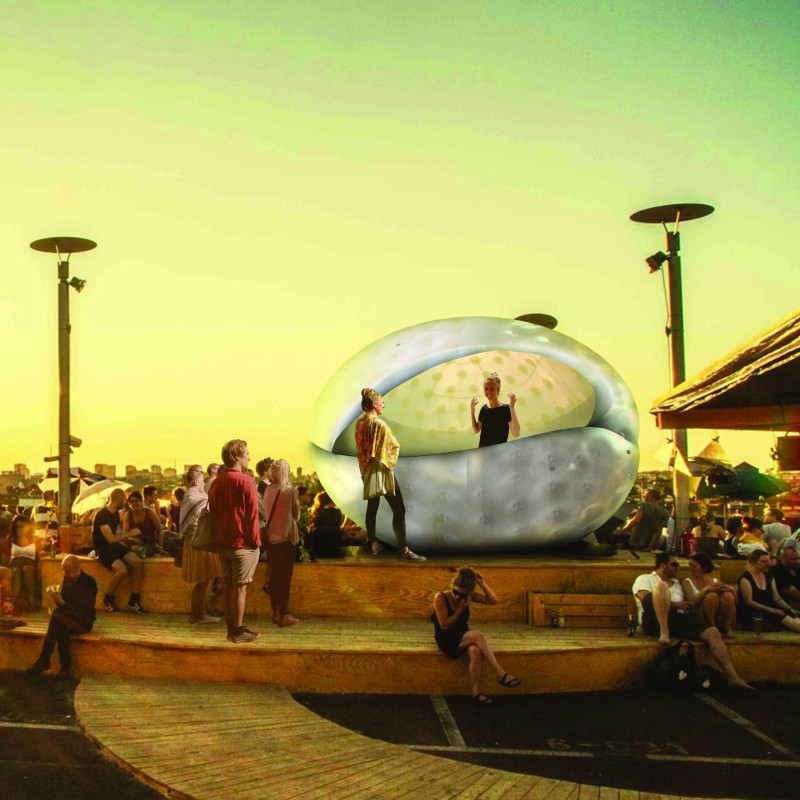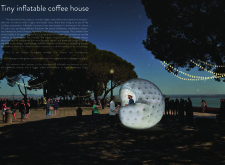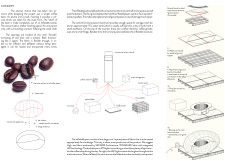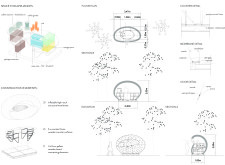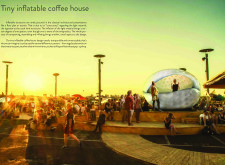5 key facts about this project
The project's primary function is to serve as a multifunctional space that can accommodate various activities such as community gatherings, artistic events, and educational workshops. This adaptability is a direct response to the dynamic needs of the community, allowing the building to serve an array of purposes throughout its lifecycle. The design fosters a sense of inclusivity, inviting people from diverse backgrounds to engage in different activities while promoting social interaction and cohesion.
One of the standout features of this architectural endeavor is its facade, which showcases a harmonious blend of materials. The use of locally sourced stone integrates the structure into its environment, establishing a dialogue with the neighboring buildings while offering a sense of permanence and stability. Large expanses of glazing punctuate the facade, ensuring ample natural light floods the interior spaces. This transparency reinforces the connection between the interior and the exterior, fostering a welcoming atmosphere while providing views of the vibrant streetscape.
Internally, the organization of spaces is both intuitive and flexible. Open-plan areas are strategically designed to facilitate multi-use configurations, allowing the spaces to be adapted based on varying needs. This flexibility is further enhanced by movable partitions that can transform larger spaces into intimate meeting rooms or exhibition areas. The layout also incorporates breakout areas and informal gathering spots, encouraging spontaneous interaction among users, which is crucial for a community-centric building.
The project employs an array of sustainable practices, underscoring its commitment to environmental responsibility. Rainwater harvesting systems and energy-efficient HVAC technologies are integrated seamlessly into the design. The roof features a green terrace, promoting biodiversity while enhancing the building’s thermal performance. These design decisions not only reduce the ecological footprint of the building but also create a healthier environment for its occupants.
In terms of interior design, the project's aesthetics are characterized by a minimalist approach. Neutral color palettes are complemented by natural materials such as wood and stone, creating a warm and inviting ambiance. Lighting is thoughtfully curated to enhance the spatial experience, with both natural and artificial sources contributing to different moods throughout the day. The design team has also included elements of biophilic design, with indoor planters and natural textures providing a sense of calm and promoting well-being among users.
This project stands out not only for its architectural merit but also for its responsiveness to community needs. By engaging local stakeholders throughout the design process, the architects ensured that the final outcome reflects the aspirations and preferences of those it serves. This participatory approach is a hallmark of contemporary architectural practice and reinforces the relevance of the building within the community.
Those interested in delving deeper into the nuances of this architectural design should explore the project presentation. Reviewing elements such as architectural plans, architectural sections, and architectural designs will provide further insights into the innovative approaches adopted throughout the project. This exploration will reveal the layers of thought and consideration that underpin the architecture, showcasing how the project not only meets functional requirements but also contributes positively to the urban landscape.


